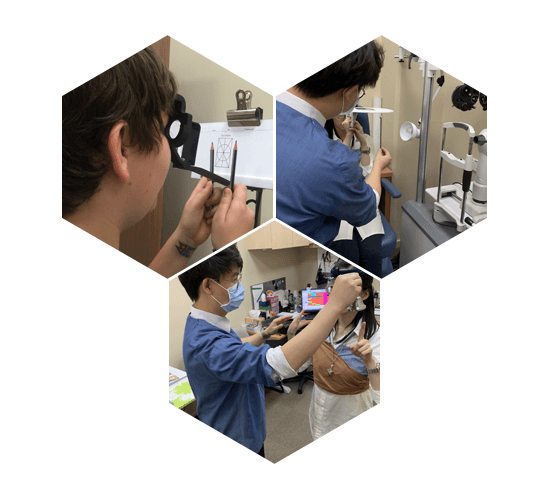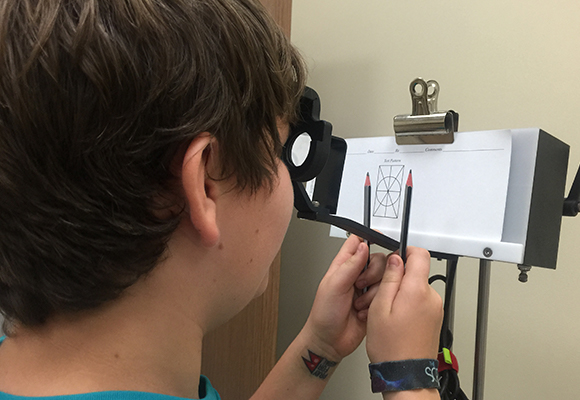Lens Therapy

Prescribes A Variety Of Lens Therapy To Be Worn For Different Types Of Conditions.
Several different levels of therapy are offered to patients. They are related to the outcome of the diagnostic process. They include a compensatory lens, a lens therapy program or training lenses with vision therapy.
A compensatory lens is a lens which restores standard visual acuity and merely compensates for the maladaptation which the individual has made. In no way does it treat the underlying problem.
A lens therapy is used to either direct future change in the visual status to a less adapted state, or to improve performance of the individual by decreasing the intensity of the visual stress acting upon the individual. It creates a better coordination between space world and reality.
Some lenses (lens therapy) can provide improved processing of visual information by helping you use your side vision (peripheral). We use our peripheral vision to help us understand where we are. Some different reasons for special lenses include difficulties with 3D or depth perception, other times for issues with side gazing, poor concentration, toe walking, lack of awareness of surroundings or to slow down the progression of shortsightedness (Myopia, Rabun Jauh 近视).
Other lenses are used to help compensate for poor vision in the distance. The lenses make things clear in the distance. The standard measurement for this is 20/20 vision which means you are able to see the letters on the eye chart you are supposed to see from 20 feet.
Prism can be put in lenses (lens therapy) to help create a posture change for those with head tilts due to underlying vision problems. It is also used for certain types of eye movement disorders and double vision. In addition, Prism Lenses are used as a training tool during the vision therapy program and are changed periodically throughout the program.
Stress Relieving Lenses (lens therapy) are used to help reduce the amount of work our eyes have to do when looking at things up close. These lenses are used specifically for reading, in school or indoors. Sometimes Reading Lenses are prescribed specifically for use during the vision therapy program. They should be worn for approximately 2-3 months and then have re-evaluation to see if prescription or wearing schedule needs to be changed.
Shortsightedness Lenses (lens therapy) are used when children become nearsighted too quickly. In many cases the reason for shortsightedness (myopia) is because they are working too hard up close. Special reading glasses are prescribed to make it easier when your child is reading. This typically slows down the progression of shortsightedness. When combined with vision therapy or orthokeratology (Ortho-K), myopia can be slowed down even more, depending on the reason for the shortsightedness.
Compensate glasses is commonly prescribed by optical stores for letting you see clearly by correcting your refractive errors, e.g. shortsightedness, longsightedness, etc., without curing the underlining causes or problem, if any.
Therapeutic glasses, on the other hand, helps to resolve the root cause of your visual problem and increase your performance in line with your visual demand although it will not give you FULL clear at distance vision.
Size lenses are specially designed lenses that can help improve binocular vision by correcting for the differences in the size and shape of images seen by each eye. When the images received by the two eyes are not the same size or shape, it can cause visual discomfort and affect depth perception.
Please discuss with our vision specialist for having a comprehensive understanding of your condition.

The lens type prescribed to you with the highest regard and if you experience any of the below symptoms, remember it can take a few days and sometimes a few weeks for your eye and brain to fully adjust to your new eyewear. The lens prescribed to you is not just having a clear vision but it needed to realign your visual system which is in a passive therapy.
Symptoms that might experience during the adaptation period
-
Blurry vision
-
Eye strain
-
Dizziness and nausea
-
Headaches
-
“Barrel distortion” Objects seem distorted
-
“Fishbowl effect” Field of vision looks as if it is being bent along the edges


